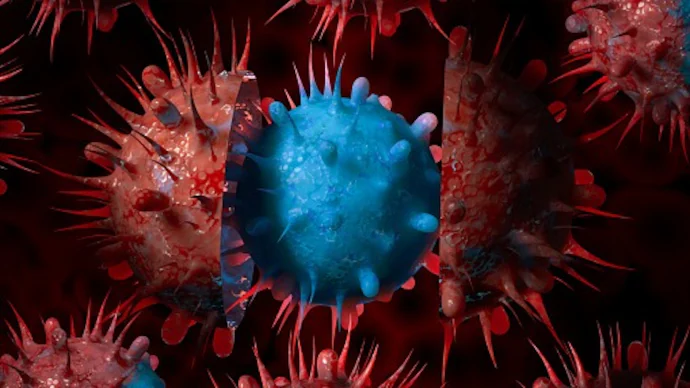Just when COVID-19 seemed to be brought under control, a new variant called NB.1.8.1 has cropped up. This subvariant of Omicron was first seen in early 2025 and is now spreading in a number of countries, including the UK. It is being monitored by scientists because of how fast it spreads and its possible potential to beat the immune system of vaccines or past infection.
The World Health Organization (WHO) has classified NB.1.8.1 as a “variant under monitoring,” meaning it’s not yet officially declared risky—but it’s definitely one to watch.
Where did NB.1.8.1 Originate?
NB.1.8.1 is a member of the bigger Omicron family. It first emerged this year and has since been recorded in more than 20 countries. In addition to the UK, it’s also been found in the US and in several European countries. It’s early days, but its quick spread around the world has raised alarm.
Also read: Joe Biden’s Prostate Cancer Diagnosis Sparks Political Debate
What Are the Common Symptoms?
Most of the symptoms of NB.1.8.1 are like in other Omicron subvariants, but some minor differences exist. Here’s a summary of what individuals have reported:
- Fever or chills
- Dry, persistent cough
- Fatigue or being very tired
- Sore throat
- Runny or congested nose
- Headache
- Muscle or body aches
- Loss of taste or smell (less frequent nowadays)
These symptoms can appear very much like a common cold, so it’s easy to miss. Some are only mildly ill, while others are more seriously affected.
Any Odd Symptoms?
A few less common symptoms are beginning to appear that distinguish NB.1.8.1. While not very common, they’re still notable:
- Stomach upset: Some have nausea, vomiting, or diarrhea
- Skin rashes: These have been observed in some cases
- Dizziness or confusion: Expressed in a few cases, particularly among older people
Physicians state these symptoms are different from individual to individual, and just one of them isn’t a confirmation of COVID. However, when something doesn’t feel right, it’s good to test it.
Who’s Most Vulnerable?
Though most individuals have light symptoms, NB.1.8.1 may still be dangerous for others:
- Adults older than 65 years
- Individuals with weakened immune systems
- Unvaccinated people, particularly those without booster shots
These populations are urged to remain even more vigilant and watch carefully for any indication of illness.
How Can You Prevent It?
Don’t panic, but take a little carefulness. Here are some measures you can take to protect yourself and others:
- Get vaccinated: Stay up to date with COVID vaccine booster shots and updates
- Wear a mask: Particularly in public or in indoor settings
- Clean your hands: With soap and water, or sanitizer when out
- Don’t stand close to anyone who is sick
- All these habits continue to counteract this new subvariant.
What If You Get Sick?
If you begin to feel ill with any of the symptoms listed:
- Isolate immediately
- Get a COVID test—rapid tests are useful, but PCR is more accurate
- Notify close contacts to prevent further transmission
- Keep an eye on your symptoms and seek medical attention if they get worse
NB.1.8.1 is a reminder that COVID isn’t gone entirely. But now we have more tools, more knowledge, and more ways to battle it.
Also read: UnitedHealth CEO Andrew Witty Steps Down During Financial Uncertainty
Final Thoughts
The arrival of NB.1.8.1 might feel like déjà vu, but it doesn’t signify that we are back to square one. Thanks to vaccines, revised testing tools, and increased awareness, we are better placed.
So stay alert. Stay calm. And take the precautions you already know. The best way to encounter new variants is to stay ready and safeguard yourself as well as your community.








